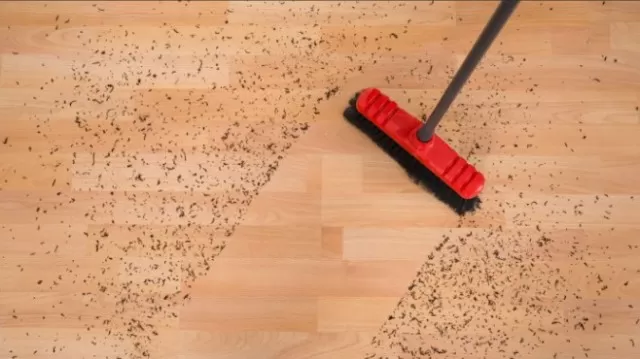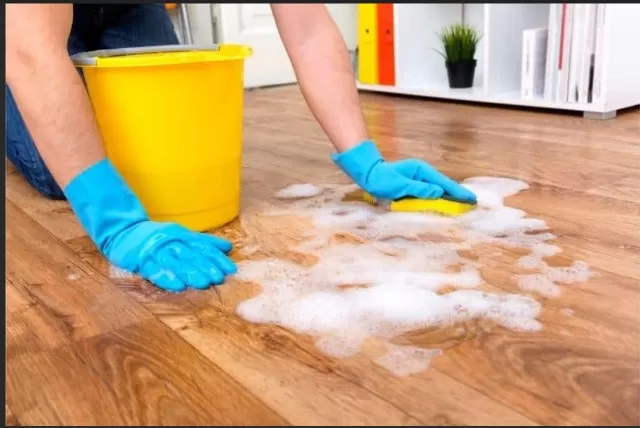Prescription for Hardwood Floors: Care and Maintenance Tips.When accidents and spills occur on hardwood floors, it’s important to take immediate action to prevent any potential damage.
The American Hardwood Information Center provides valuable tips for effectively cleaning hardwood floors after different types of accidents and spills. Here are some expert recommendations:
Dealing with Food Spills: Effective Techniques for Cleaning and Restoring Wood Surfaces

When confronted with food spills on wood surfaces, it is essential to act promptly and employ proper cleaning methods.
In the case of caked or dried spills, employing a sharpened knife blade is recommended. Carefully working from the spill’s outer edge towards the center, gently scrape up the residue, taking care not to cause any scratches on the delicate wood surface.
To restore the affected area, begin by rubbing the damaged spot with a slightly dampened cloth.
This will help remove any remaining stains or residue. Afterward, follow up with a dry cloth to ensure the surface is thoroughly dried.
This two-step process will effectively eliminate the spill and leave your wood surface looking clean and well-maintained.
If your wooden floor features a waxed surface, it is crucial to take additional steps to restore its luster.
After cleaning the spill, re-waxing the area is necessary. Apply a suitable wax product and carefully buff the repaired section to ensure a seamless finish.
This extra effort will not only restore the beauty of your floor but also provide a protective layer against future spills and stains.
By promptly addressing food spills and employing these techniques, you can effectively clean and restore your wood surfaces, ensuring their longevity and maintaining their aesthetic appeal.
Addressing Various Imperfections: Effective Solutions for Crayon Marks, Chewing Gum, and Candle Wax on Wood Surfaces
Apart from food spills, wood surfaces may encounter other imperfections such as crayon marks, chewing gum, and candle wax.
Fortunately, with the right techniques, these flaws can be effectively dealt with.
Crayon marks can often be removed by gently rubbing them with a soft cloth that has been lightly dipped in a mild dishwashing detergent.
This gentle cleaning solution helps break down the crayon marks without causing damage to the wood surface. Afterward, ensure that the area is wiped clean and dry to restore the surface’s original appearance.
On the other hand, removing chewing gum and candle wax requires a slightly different approach.
Begin by applying a wood-floor cleaning product specifically designed for such issues. Allow the cleaning product to permeate the spill, giving it time to loosen the gum or wax from the wood surface.
This will facilitate easier removal.
Next, use a plastic spatula or a sharpened knife edge to carefully scrape off the blemish.
Take caution to avoid scratching the wood surface while effectively removing the gum or wax residue. It is important to work gently and patiently during this process.
An alternative method for dealing with gum or wax spills involves using ice.
Apply ice to the affected area until the spill becomes brittle. Once the gum or wax hardens, carefully scrape it off using a plastic spatula or a sharpened knife edge, following the same procedure as described above.
By utilizing these effective techniques, you can successfully tackle common imperfections like crayon marks, chewing gum, and candle wax on wood surfaces.
Restoring the pristine condition of your wood surfaces will help maintain their beauty and ensure their longevity for years to come.
Tackling Oil and Grease Stains: Effective Methods for Surface-Finished and Penetrating Finish Wood Floors

Oil and grease stains can be particularly challenging to remove from wood floors.
However, depending on the type of finish your floor has, there are specific techniques you can employ to effectively address these stains.
For surface-finished floors, which are typically coated with urethane, mineral spirits or TSP (tri-sodium phosphate) can be used to tackle oil and grease stains.
Begin by applying a small amount of mineral spirits or TSP to the stained area. Then, using a clean cloth, gently wipe the affected spot.
This will help break down and lift the oil or grease from the surface. Remember to work in a well-ventilated area and follow the safety instructions provided with the cleaning products.
In the case of penetrating finish floors, which have a more natural look, the process for removing oil and grease stains differs slightly.
Applying TSP or a high-lye-content soap is recommended. These products have the ability to penetrate the wood’s surface and effectively break down the stains.
Apply a small amount of TSP or high-lye-content soap to the affected area and work it into the stain using a clean cloth or sponge. Allow the cleaning agent to sit for a few minutes to ensure it thoroughly penetrates the stain.
Then, gently wipe away the residue, ensuring the stain is lifted from the wood.
It is important to note that when dealing with any cleaning agents, it is advisable to test them on a small, inconspicuous area of the floor first to ensure they do not cause any adverse reactions or damage the finish.
By following these specific techniques for surface-finished and penetrating finish wood floors, you can effectively remove oil and grease stains, restoring the natural beauty of your wood surfaces.
Remember to always exercise caution and conduct a patch test before applying any cleaning products to your floors.
Addressing Stubborn Stains: Effective Techniques for Ink Spills and Pet Accidents on Wood Floors
When faced with more serious stains such as ink spills or the aftermath of a pet accident on your wood floor, it’s important to employ specific methods to effectively clean and restore the affected area.
For ink spills, start by using No.
2 steel wool in conjunction with mineral spirits or a wood-specific cleaning product. Gently scrub the stained spot using the steel wool and cleaning agent.
This combination will help break down and lift the ink stain from the wood surface. Take care not to apply excessive pressure that could damage the floor.
Once the ink stain is removed, proceed to the next step.
To further cleanse the area, utilize household vinegar.
Apply a small amount of vinegar to the stain and allow it to stand for a few minutes. Vinegar acts as a natural cleaning agent and can help neutralize odors as well.
Afterward, wipe away the vinegar using a clean cloth or sponge.
The next steps will depend on the type of finish your floor has.
If your floor has a waxed surface, re-waxing and buffing the area is necessary. Apply a suitable wax product to the repaired section and follow the manufacturer’s instructions for application.
Once the wax is applied, buff the area using a soft cloth or buffer to restore the shine and protective layer.
In the case of a urethane finish, after cleaning the stain, it’s recommended to apply two coats of urethane.
Ensure that the urethane product you choose is suitable for wood floors and follow the instructions for application. This will provide a fresh protective layer and enhance the appearance of the repaired area.
Remember to always test any cleaning agents and products in a small, inconspicuous area first to ensure compatibility with your specific floor finish.
By following these techniques, including the use of steel wool, cleaning agents, vinegar, and the appropriate restoration method based on your floor’s finish, you can effectively tackle serious stains on your wood floors, bringing them back to their original beauty.
Tackling Resilient Stains: Effective Approach for Stubborn Stains on Wood Floors

When confronted with persistent and stubborn stains on your wood floors, it may be necessary to use a stronger solution to effectively remove them.
Follow these steps to address such stains:.
Begin by preparing a cleaning solution by mixing one ounce of oxalic acid with a quart of water.
Please note that oxalic acid is toxic, so it’s crucial to wear rubber gloves and take appropriate safety precautions while handling it. Ensure you have good ventilation in the area where you’re working.
Apply the oxalic acid solution to the stubborn stain on the wood floor.
You can use a sponge or a clean cloth to carefully apply the solution to the affected area. Allow the solution to sit and work on the stain for approximately one hour.
During this time, the oxalic acid will help break down and lift the stubborn stain from the wood surface.
After the solution has had sufficient time to work, dampen a sponge with Clean Water and gently wipe the damaged area.
This step will help remove any residual oxalic acid and any remnants of the stain. Thoroughly rinse the sponge as needed to ensure you’re using clean water for wiping.
Once the floor has been wiped clean, allow it to fully dry.
Depending on the severity of the stain and any potential damage caused by the oxalic acid, the next step may involve refinishing the affected area of the wood floor. Refinishing may include sanding the area, applying a suitable wood stain or finish, and following the manufacturer’s instructions for application.
This process will restore the appearance and protect the wood surface.
Remember, when working with any strong cleaning agents or chemicals, it’s essential to carefully follow safety instructions and guidelines.
Additionally, consider testing the oxalic acid solution on a small, inconspicuous area of the floor first to ensure it doesn’t cause any adverse effects.
By using the proper precautions and following these steps, you can effectively address stubborn stains on your wood floors, ultimately restoring their beauty and ensuring a clean, refreshed appearance.
*The information is for reference only.